10 Surprising Ways 20th Century Art Changed the World and the Art Market
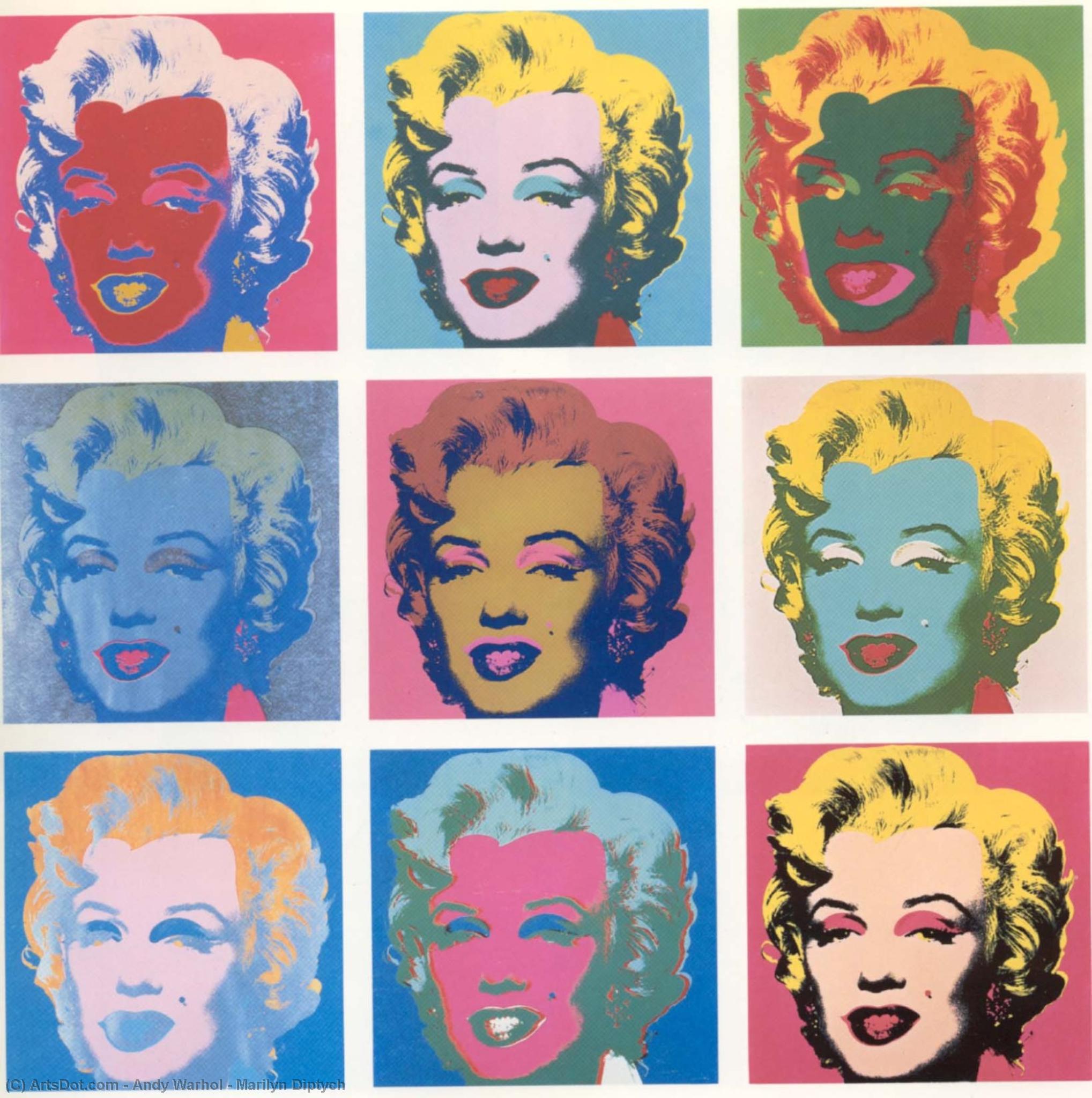
The evolution of 20th Century Art is a thrilling saga of innovation, rebellion, and cultural transformation. In a mere hundred years, art leaped from the genteel scenes of the 19th century into a brave new world of abstraction, experimentation, and social commentary.
Table of Contents
Artists broke every rule – shattering perspective, inventing shocking new styles, and even redefining what “art” itself means. These creative earthquakes did more than dazzle the eye; they mirrored the tumult of a century marked by world wars, rapid technological progress, and shifting social values. They also laid the groundwork for today’s multi-billion-dollar art market, where the masterpieces of the 20th century continue to command awe and top dollar. In this comprehensive journey through 20th Century Art, we’ll explore 10 powerful ways 20th Century Art changed our world – from stylistic revolutions and emotional impact to lasting influence on contemporary artists and today’s art market trends. Get ready for a surprising, insightful trip through the art that defined a century.
Breaking with Tradition: The Modernist Revolution in 20th Century Art
Early 20th Century Art began with a rebellious break from tradition. Movements like Fauvism and Cubism overturned the genteel realism of previous eras and instead embraced bold experimentation. In Paris, Fauvist painters such as Henri Matisse shocked viewers with wild, non-naturalistic colors that celebrated emotion over accuracy (en.wikipedia.org).
Meanwhile, Pablo Picasso and Georges Braque pioneered Cubism, fracturing objects into geometric facets seen from multiple viewpoints.
This radical technique “rejected the plastic norms of the Renaissance” by abandoning single-point perspective (en.wikipedia.org).
A landmark of this modernist revolution was Picasso’s Les Demoiselles d’Avignon – a 1907 canvas of five angular nudes that scandalized the public.
With its African mask-inspired faces and shattered plane of space, Picasso’s masterpiece announced that 20th Century Art would not be bound by past conventions.
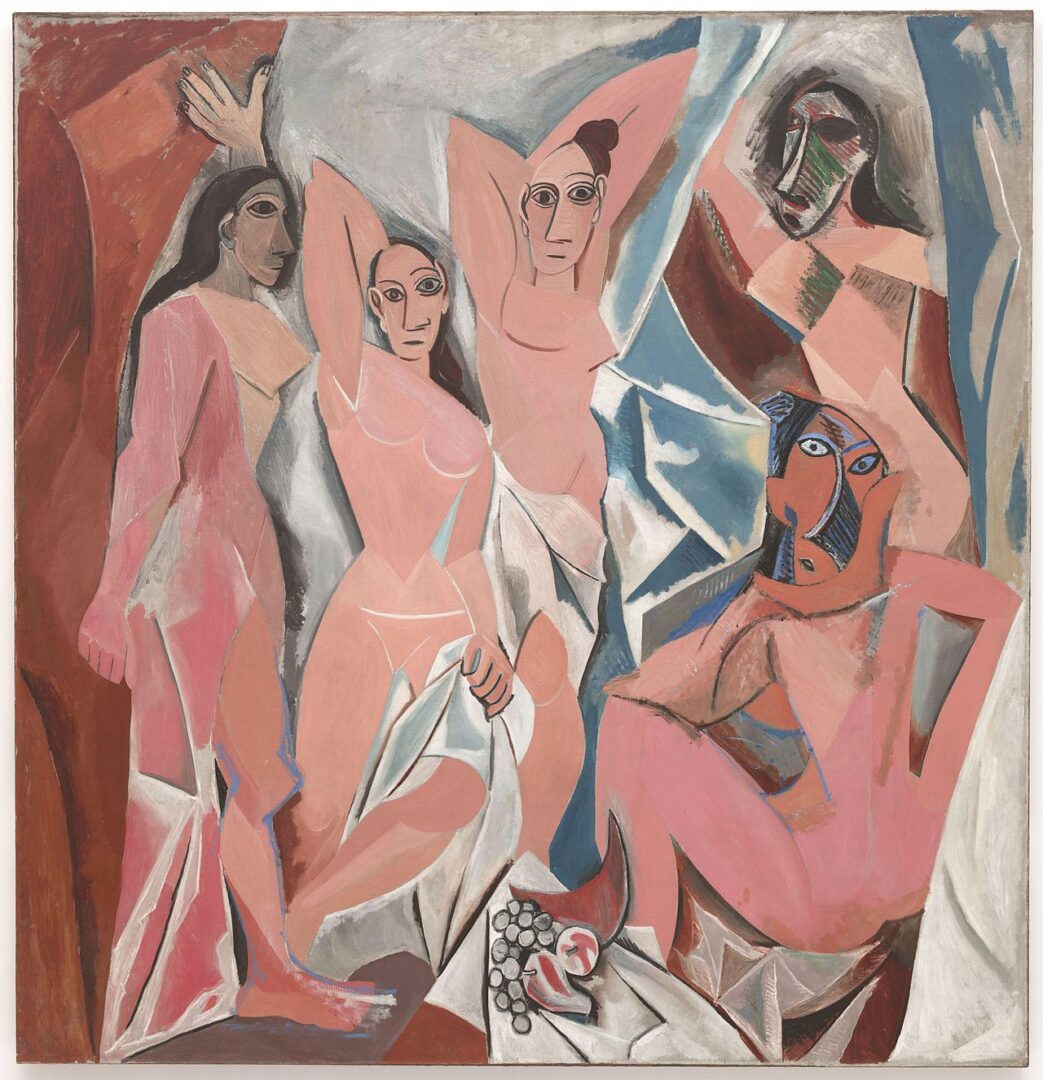
Artists also explored pure abstraction: by 1913, Wassily Kandinsky and others were creating paintings with no recognizable subject at all, using color and form alone to evoke feeling. This modernist spirit – summed up by poet Ezra Pound’s 1934 command to “Make it new!” – set the tone for an era of ceaseless artistic innovation. In breaking with tradition, the early 20th century’s Modern Art movements redefined what art could be, unleashing a tidal wave of creativity that still ripples through galleries today.
Art as a Mirror of a Turbulent Century
If art is a mirror to society, then 20th Century Art was a shattered looking-glass reflecting a world in upheaval. Two world wars, economic depressions, and social revolutions left indelible marks on artists’ psyche and productions. After the horrors of World War I, the Dada movement arose in protest – a deliberate “anti-art” that embraced chaos and irrationality. In 1917, Dadaist Marcel Duchamp famously submitted a signed porcelain urinal titled Fountain to an exhibition, mocking the very definition of art. Critics were aghast, but Duchamp’s bold gesture questioned every artistic assumption and foreshadowed the conceptual art of decades to come (re-thinkingthefuture.com).
Artists also turned inward to make sense of trauma. The Surrealists, led by figures like Salvador Dalí and René Magritte, delved into dreams and the subconscious as inspired by Freudian psychology. Their bizarre, dreamlike scenes – melting clocks, floating apples – provided a creative escape from reality’s nightmares (en.wikipedia.org). In Mexico, painters like Frida Kahlo channeled personal pain and national identity onto canvas, blending realism and symbolism to process a turbulent life and era. Across the globe, 20th Century Art became a visual diary of a century’s trials and triumphs.
From the disillusionment of post-WWI Europe (captured in Otto Dix’s grim war portraits) to the hopeful social murals of the New Deal in America, art captured emotions that words often could not. Short paragraphs, bold images, and raw experimentation allowed artists to communicate the unspeakable. In doing so, 20th Century Art evolved as a powerful historical mirror – confronting, critiquing, and ultimately healing a world in constant change.
The Shock of the New: Dada and Conceptual Breakthroughs
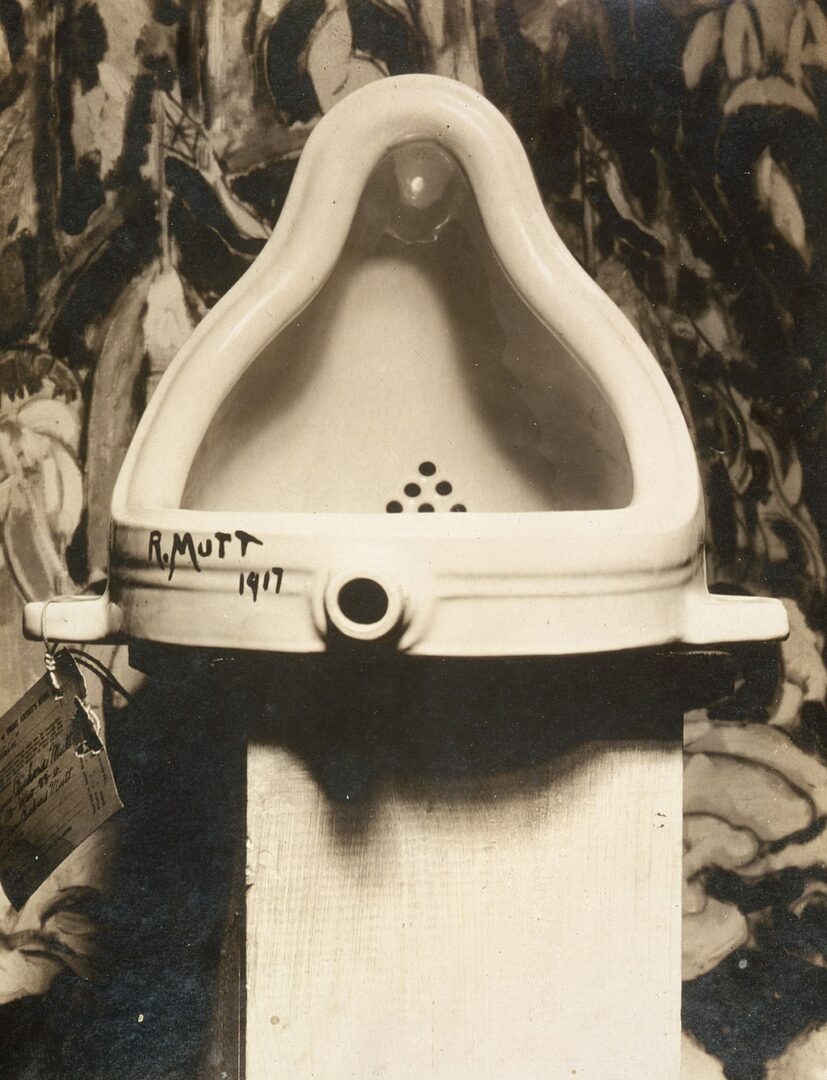
One of the most surprising legacies of 20th Century Art is how it demolished the very concept of art itself. The Dada movement in the 1910s and 1920s revelled in nonsense and provocation, reflecting a generation’s disgust with a war-torn world. Marcel Duchamp’s Fountain – literally a common urinal turned on its back – was a Dada masterstroke that declared anything could be art if an artist decreed it so.
This audacious idea laid the groundwork for Conceptual Art, where the concept or idea behind a work matters more than the finished object (en.wikipedia.org).
By mid-century, artists were carrying Duchamp’s torch forward: Yves Klein sold invisible “zones” of space as artworks;
Joseph Beuys declared his life a creative act; and John Cage composed 4’33” of silence as music. Such works shocked audiences, but they also expanded creative freedom immeasurably. “Conceptual art is art for which the idea…is more important than the finished art object,” explains the Tate Museum’s art glossary (facebook.com). This paradigm shift – born in the 20th century – means that a pile of bricks, a performance, or a simple line of text can be celebrated as fine art if it stimulates thought and feeling.
The legacy of these conceptual breakthroughs is evident in today’s installations and performance art. Whenever we see an artwork that makes us ask “Is this really art?”, we are experiencing the lasting shock waves of 20th Century Art’s boldest experiments.
Abstract Expressionism and the Pursuit of Freedom
In the mid-20th century, the art world’s epicenter shifted across the Atlantic. New York City gave rise to Abstract Expressionism, a movement that embodied the era’s thirst for personal and political freedom. In the late 1940s and 1950s, painters like Jackson Pollock, Willem de Kooning, and Mark Rothko created large-scale abstract works that broke every rule of painting. Pollock famously dripped and flung paint onto canvases sprawled on his studio floor, creating dense webs of color and energy with no recognizable subject.
These radical techniques were more than stylistic bravado – they symbolized freedom of expression and the individual’s search for meaning in an uncertain world (metmuseum.org). In fact, 20th Century Art of this period carried Cold War cultural weight. As one analysis notes, “In the mid-twentieth century, modern art and design represented the liberalism, individualism, dynamic activity, and creative risk possible in a free society.” Pollock’s uninhibited style stood in stark contrast to the oppressive artistic controls of Nazi Germany and Soviet Russia (daily.jstor.org).
The U.S. government and even the CIA quietly supported exhibitions of Abstract Expressionism abroad, leveraging art as a weapon of diplomacy to showcase American ideals of free thought (daily.jstor.org). At home, the movement also reflected a break from the past: these artists rejected the social realism of the 1930s, seeking instead a “universal inner source” of art by tapping into subconscious impulses and myths (metmuseum.org).
The result was paintings of monumental scale and emotional intensity – whether Pollock’s frenetic drip paintings or Rothko’s serene color fields – that aimed to move viewers at a primal level. Abstract Expressionism decisively established the United States as a leader in 20th Century Art and inspired generations of artists to follow their passion with uncompromising authenticity.
Pop Art: When Consumer Culture Meets Canvas
Not long after the lofty abstractions of the New York School, 20th Century Art took another sharp turn – this time toward the gleaming surface of mass media and consumer culture. Enter Pop Art in the 1960s, an irreverent movement that blurred the line between fine art and everyday life. In place of drips and dreams, Pop artists offered soup cans, comic strips, and celebrities. Andy Warhol, the most famous Pop artist, turned Campbell’s soup cans and Marilyn Monroe’s face into art icons, elevating advertising imagery to gallery walls.
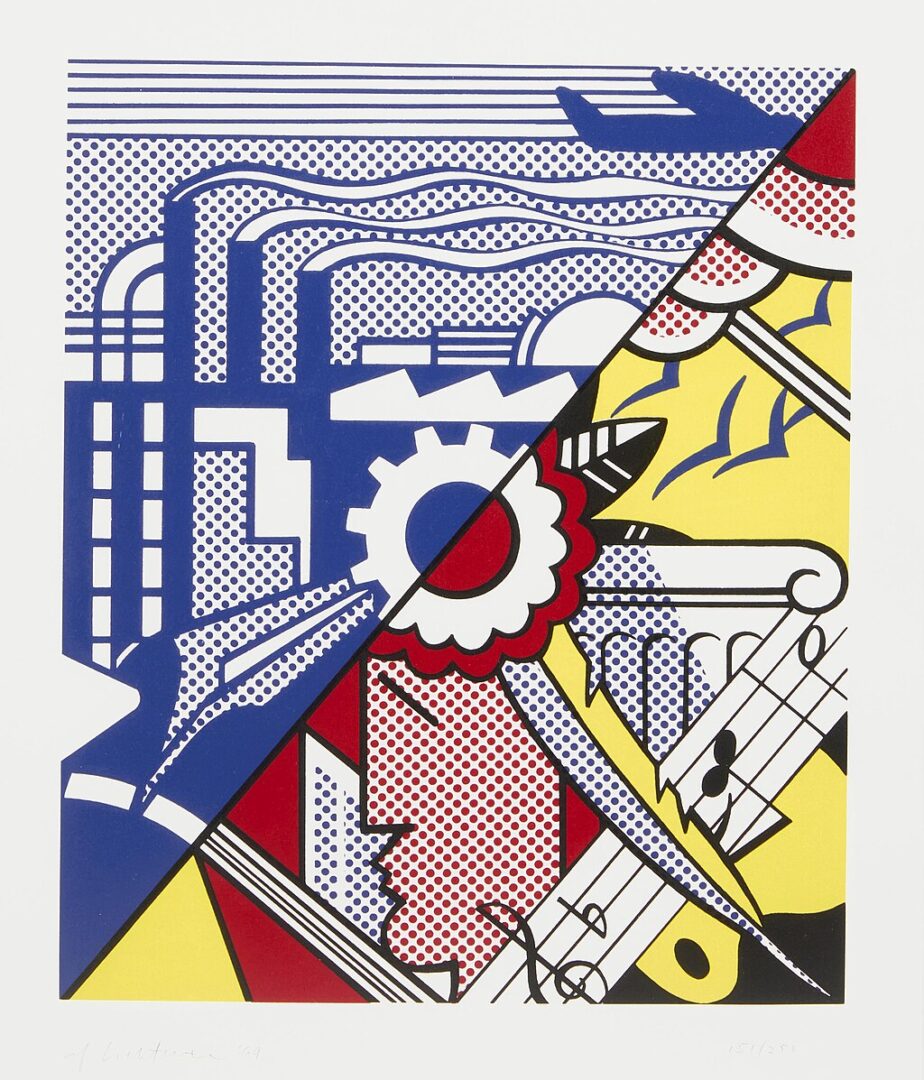
His 1962 canvas of Campbell’s Soup Cans, featuring dozens of nearly identical soup can images, celebrated the mundane and questioned the idea of originality.
As Warhol quipped, “I want to be a machine” – he often silkscreened photographs repeatedly, embracing mechanical reproduction and commercial techniques (en.wikipedia.org).
More than shock value, Pop Art delivered a savvy critique: Warhol’s work “served as a critique of American consumer culture and its obsession with celebrity and wealth” (en.wikipedia.org). Similarly, Roy Lichtenstein transformed comic book panels into monumental paintings, complete with Ben-Day dots, to explore the clichés of romance and war in popular media.
Pop Art’s brash, colorful works were fun and accessible, but also subversive in how they challenged the “high art” elitism of prior movements. By turning mass culture into art, Pop artists like Warhol, Lichtenstein, and Claes Oldenburg (who sculpted giant hamburgers and clothespins) redefined the artist’s role in the modern media-saturated world.
They showed that 20th Century Art could be both a mirror and a lamp – reflecting society’s obsessions while also illuminating them in new ways. The influence of Pop Art remains strong today, from the appropriation art of the 1980s to our current mash-up culture where memes and fine art readily intermingle.
Global Voices and Diverse Movements Emerge
While much of the early 20th century art narrative centered on Europe and later the U.S., by the mid-to-late century the canvas had expanded to a truly global stage. One of the remarkable aspects of 20th Century Art is the way diverse cultures and voices increasingly gained recognition, enriching the art world with new perspectives. In post-colonial Africa and Asia, modern artists blended local traditions with avant-garde techniques: for example, in Nigeria the Zaria Art Society in the 1960s pioneered a style fusing indigenous motifs with contemporary forms, sometimes called “African modernism.”
In Latin America, artists like Diego Rivera and Frida Kahlo had already become international icons by mid-century, and their success paved the way for others across the global south. By the 1980s and 1990s, major exhibitions and biennials began spotlighting non-Western artists, correcting a Eurocentric bias. The late 20th century also saw movements emphasizing identity and inclusion.
The Feminist art movement of the 1970s – with artists such as Judy Chicago and Ana Mendieta – challenged the male-dominated art canon and brought women’s experiences and bodies to the forefront of art. In Black and African American communities, the Harlem Renaissance earlier in the century and the Black Arts Movement of the 1960s–70s fostered visual art that celebrated Black identity and political struggle.
By the end of the century, artists from formerly marginalized groups had seized the spotlight: for instance, Jean-Michel Basquiat, a young Black painter from New York, rose to meteoric fame in the 1980s with neo-Expressionist works that combined urban graffiti energy with commentary on race and history. Basquiat’s success (his works now sell for tens of millions) signaled that 20th Century Art was no longer the province of a few elite capitals – it was a truly global conversation. This democratization and diversification of art in the late 20th century set the stage for the vibrant international art scene we know today, where voices from every corner of the world contribute to the ongoing story of art.
Postmodernism Blurs Boundaries in Late 20th Century Art
As the 20th century drew to a close, artists grew ever more playful and skeptical about the very notion of art and originality. The result was Postmodernism, a loose umbrella for late-century tendencies that mixed high and low culture, irony, and pastiche. In contrast to the “serious” progress of Modernism, Postmodern artists gleefully blurred boundaries. They might combine painting and performance, or juxtapose classical imagery with pop culture kitsch. Jeff Koons, for example, crafted giant stainless-steel balloon animals and porcelain kitsch figures, deliberately courting both commercial success and critical debate about taste.
The UK’s Young British Artists (YBAs) in the 1990s – like Damien Hirst and Tracey Emin – exemplified postmodern attitudes. Hirst’s most famous work, a 14-foot shark preserved in formaldehyde (The Physical Impossibility of Death in the Mind of Someone Living, 1991), shocked the public much as Duchamp’s Fountain had decades earlier (en.wikipedia.org). It also blurred lines between art, science, and spectacle, a hallmark of Postmodern art. Meanwhile, movements like Minimalism and Conceptual Art (overlapping with postmodernism) stripped art down to ideas and fundamental forms. Minimalist sculptors such as Donald Judd presented simple geometric objects, challenging viewers to consider space and materials rather than narrative or emotion.
Conceptualists like Joseph Kosuth might display a dictionary definition as the artwork itself. In the late 20th century, 20th Century Art truly embraced the notion that anything goes – or more precisely, that all ideas are worth exploring in art. Appropriation became a strategy: artists like Sherrie Levine re-photographed famous photographs, and Richard Prince re-used advertising images, to question authorship and authenticity. By demolishing the last sacred cows of originality and genre, postmodern artists completed the century’s journey of artistic liberation. They opened the door to the eclectic, concept-driven art of the 21st century, where installation art, digital media, and interdisciplinary works thrive.
Art Becomes Big Business: The 20th Century Art Market Boom
Another surprising way 20th Century Art changed the world lies outside the galleries and inside the auction houses. In the latter half of the century, art became big business on a global scale. The post-WWII economic boom created a new class of wealthy collectors, and iconic 20th century masterpieces became coveted trophies. By the 1980s, the art market was making headlines as auction prices soared to record heights.
Famous names of early and mid 20th Century Art – Picasso, Van Gogh, Warhol, Monet – started commanding multi-million dollar bids, transforming art into an investment asset as much as a cultural treasure. In 1973, a record was set when a painting by Peter Paul Rubens (an Old Master) sold for $5.5 million, but 20th-century works soon eclipsed that.
A watershed moment came in 1990, when Van Gogh’s Portrait of Dr. Gachet (1890) sold for $82.5 million to a Japanese collector, astounding the world and heralding an era of sky-high art prices. The trend continued: in 2004, Pablo Picasso’s 1905 painting Garçon à la Pipe became the first artwork to break the $100 million barrier at auction, hammering for $104.2 million (news.artnet.com). Auction houses like Christie’s and Sotheby’s also expanded globally, marketing 20th Century Art to emerging collectors in Asia and the Middle East.
By the end of the century, art wasn’t just for museums – it was a glamorous asset class, discussed in the same breath as real estate or stock portfolios. This commercialization had a profound effect on artists and the kinds of work that thrived.
Some artists, like Andy Warhol, embraced the marketplace openly (Warhol famously said, “Making money is art”). Others were wary, but nonetheless saw their careers and creative directions influenced by the demand of galleries and collectors. The art market boom also led to blockbuster museum shows and a star system for living artists, foreshadowing today’s celebrity artist culture. In short, the late 20th century witnessed art stepping out of the salon and into the stock exchange – a development with both exciting and challenging implications for the cultural landscape.
20th Century Art in Today’s Market – Trends and Performances
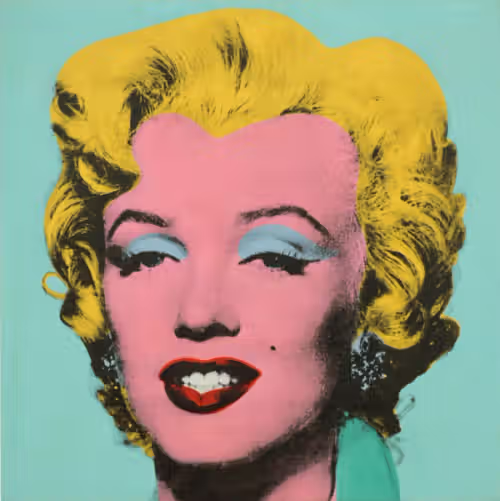
Even as we forge ahead in the 21st century, 20th Century Art continues to be a driving force in the global art market and cultural imagination.
Many of the top-selling artists at auction today are 20th-century masters, whose works appreciate like blue-chip stocks.
For instance, in 2022 Andy Warhol’s Shot Sage Blue Marilyn (1964) sold for $195 million, setting a record as the most expensive 20th-century artwork ever sold (myartbroker.com).
And in 2024, a René Magritte Surrealist painting fetched $121 million – the highest auction price globally that year – underscoring the undimmed allure of great 20th century works (christies.com).
Auction houses now often curate sales that mix 20th-century art with contemporary pieces, emphasizing continuity and crossover appeal. Sotheby’s even staged a groundbreaking “transversal” sale in Diriyah, Saudi Arabia, where paintings by Magritte hung alongside works by street-art provocateur Banksy, and a classic Warhol silkscreen was offered next to an NFT crypto-art piece. This trend reflects how collectors and the public view art history less as isolated chapters and more as a fluid dialogue across eras. Indeed, auctioneers report that the market for quality works is “strong across mediums and eras”, as buyers seek both the classic and the cutting-edge in their collections (christies.com). However, tastes are evolving with new generations.
According to the Artprice Contemporary Art Market Report 2025, Millennial and Gen Z collectors often gravitate toward works that speak to today’s social and cultural issues, sometimes favoring living contemporary artists over the “great historical names” of 20th Century Art.
These younger buyers are also comfortable purchasing art online and at lower price points, driving a boom in transactions for works under $5,000 even as the very high end has cooled. The result is a more democratized market: while trophy 20th-century masterpieces still command headline-grabbing prices, a broader base of emerging collectors is reshaping demand with different priorities. Galleries and auction houses are adapting by highlighting 20th-century artists who resonate with contemporary values (for example, renewed interest in women Surrealists like Leonora Carrington or in the political pop art of Keith Haring).
Overall, the evidence is clear that 20th Century Art’s legacy in the market is dynamic and alive – its masterpieces serve as both stable cornerstones of value and as inspirations that spur new artistic dialogues in the 21st century.
Conclusion: The Lasting Legacy of 20th Century Art
The story of 20th Century Art is ultimately one of transformation – of art, of society, and of how we perceive creativity itself. Over the course of one turbulent century, art was reinvented many times over. Artists cast off academic constraints and fearlessly experimented with form and content, producing styles that range from the explosively colorful to the starkly minimal. They responded to the profound events around them – world wars, social upheavals, technological advances – ensuring that art remained a vital reflection of the human condition.
In doing so, 20th Century Art changed how we define art: a painting could be pure color and emotion, a sculpture could be a readymade object, and an idea could be as significant as an image. This era’s influence is everywhere today. We see it in the continued prominence of 20th-century masterpieces in museums and auctions, in the way contemporary artists build upon the innovations of Picasso, Duchamp, Warhol, and others, and in how art has become interwoven with global culture and commerce.
The legacy is also emotional and intellectual – 20th Century Art opened our eyes to new ways of seeing, taught us to question norms, and showed that art can engage with all aspects of life (from the unconscious mind to mass media to politics). As we look around at the art of our current century – whether it’s an immersive digital installation or a provocative piece of street art – we can trace so many threads back to the 20th century, the epoch when art truly broke free.
In summary, the impact of 20th Century Art has been profound and enduring. It not only captivated its own time with revolutionary styles and ideas, but it also set the stage for the art of the future.
The world we live in – visually rich, conceptually daring, and culturally interconnected – owes an immeasurable debt to the artists of the last century. Their daring creativity changed art forever, and through art, they indeed changed the world.